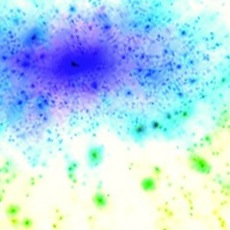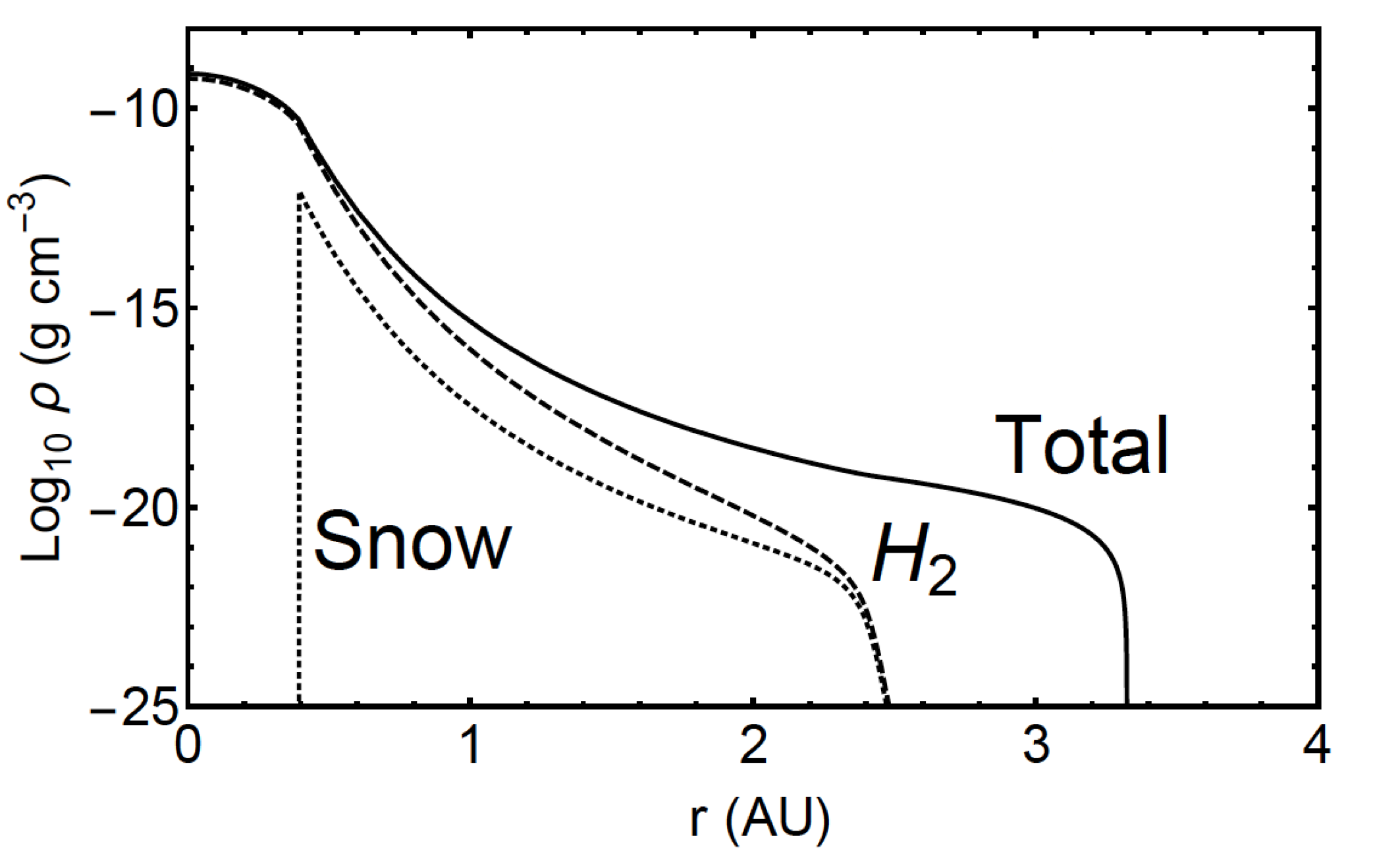 Paleons
Paleons
The extreme radio-wave scattering phenomena, that are sometimes observed towards pulsars and quasars, suggest the existence of long-lived neutral gas clouds in our Galaxy. It is natural to imagine that these clouds are very ancient, so on this site we call them "paleons". The available data suggest that individual paleons have masses in the planetary range, but radii that are perhaps a few tens of AU (1 AU is the distance between the Earth and the Sun). This interpretation of extreme scintillation implies that paleons contribute a substantial fraction of the mass of our Galaxy, and presumably other galaxies too. But they are not seen directly and they are thus a type of "dark matter" - perhaps they are the main form of matter in the Universe? In an attempt to better understand their nature we, in collaboration with Mark Wardle (Maquarie Uni), have undertaken theoretical modelling of the internal structure of paleons, aiming to sketch out their most interesting properties.
Despite the large differences in temperature and density, we model the structure of paleons in much the same way as one models the structure of stars. In both cases the main idea is that the outward pressure of the gas is everywhere balanced by the inward pull of gravity. To proceed further we need to know how the pressure of the gas relates to its density and temperature. In part that relationship is determined by what the gas is made of. We expect it to be almost entirely hydrogen and helium, in the ratio 3:1 (by mass), because that seems to be the average composition of the things in the Universe that we can see. For paleons we also expect that the hydrogen should be mainly molecular (H2).
If paleons were just a gas of H2 and helium they would be relatively simple to model. What makes them more interesting is that they also contain a sprinkling of particles of solid H2, because of the high density and low temperature of the gas. Hydrogen snowflakes can only appear in the outermost layers of a paleon, where the gas is coldest; but the solid is much denser than the gas so they drift downwards towards the centre. Although only a tiny fraction of a paleon is in the form of snowflakes at any instant, snowfall is a continuous process so it gradually causes the outer layers to become hydrogen-poor and the central regions hydrogen-rich. That process is self-limiting because at a certain point the hydrogen-rich gas in the centre becomes slightly buoyant and starts to bubble up through the hydrogen-poor envelope; in turn that causes mixing between the inner and outer regions, which stops any further change in the radial profile of the hydrogen/helium ratio. In our models the result looks like this:

Theoretical density as a function of radius within a paleon of mass 10-4 Msun. The solid line shows the total density; the dashed line is the density of H2, and the dotted line shows the contribution of solid H2 (snowflakes) to the fluid density. The difference between the dashed and solid lines is the helium density. Snowflakes contribute less than 1% of the total density at all radii.
Our models revealed some interesting properties, as follows. (i) In most cases the volume of a paleon is filled with gas at densities that are many orders of magnitude lower than the central density. These extended envelopes give planetary-mass objects that are much larger than any planet. (ii) Helium makes up an increasing fraction of the gas density as one moves outwards, with the surface being essentially pure helium. This circumstance, which is unique amongst interstellar clouds, is a direct consequence of the settling of H2 snowflakes toward the centre, and may lead to interesting consequences when a paleon interacts with its environment. Possible examples include: UV irradiation of the surface, leading to predominantly He emission lines; and mass transfer from the surface of a paleon onto a neighbouring star, yielding a hydrogen-deficient stellar surface.
The thermal properties of our models are also interesting; specifically we find (iii) that heat is convected from the surface to the interior by the buoyant fluid motions that arise from the composition gradient. This finding is quite surprising because the gas temperature increases inwards so heat is actually flowing up the macroscopic temperature gradient. The reason this happens in our models is because a parcel of gas that sinks downwards is compressed (pressure increases inwards), and as a result its temperature increases - making it hotter than the atmosphere that it's falling through. (A physicist might describe this situation more briefly as "entropy increases outwards, in these models".) In turn the inward convection of heat leads to (iv) the paleons have very cold surfaces - much colder than the 3 degrees Kelvin that characterises most of space. An example temperature profile is shown below.

Theoretical temperature as a function of radius within a paleon of mass 10-4 Msun. The kink at r=0.4 AU corresponds to the inner boundary of the region where H2 snowflakes are able to form. Near the surface of the paleon the temperature is well below the usual "deep space" value of 3 K.